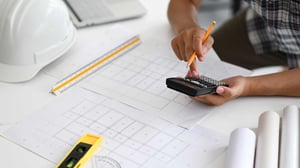Before anyone plunges head-first into the investment pool, they’ll clearly want to know how deep the waters go. Also, do they have enough oxygen to brave the depths? In the case of real estate fix-and-flips, both new and experienced investors alike all want to know two things:
With other hard money lenders, you’ll be hard-pressed to receive a direct answer to these questions. Many make their money with padded costs which add up throughout the course of the fix-and-flip process. Therefore, they may avoid giving straight answers to simple questions such as “how much will this cost me?”
Fortunately, The Investor's Edge puts your best interest and highest ROI first. Not only do we want you to make money, but we want you to feel 100% comfortable in the process. Therefore, let’s discuss roughly how much a fix-and-flip investment can cost, which variables affect this cost and how much overall profit you can make with real estate investments.
Which factors affect the overall price of a fix-and-flip?
Property Purchase Price
You will absolutely want to save as much money as possible when it comes to the purchase price. The lower the purchase price, the higher the profit margin at the back end of your deal. Also, the lower the purchase price, the higher the chance for 100% financing. 100% financing is a loan option only The Investor's Edge provides. Basically, if the property purchase price and rehab costs are less than or equal to 70% of the ARV (after-repair value) of a home, we cover all of those expenses. Period.
The easiest way to determine whether or not an asking price for a property is fair is to evaluate it. Evaluations include neighborhood comps, or how much comparable properties in the surrounding area sold for.
Rehab Costs
After you evaluate a home, you will find out exactly what needs to be repaired to bring the home to ‘move-in ready’ status. When it comes to rehab costs, you will want to stay away from deals which require excessive rehabs (over $50,000). You also want to avoid deals requiring major repairs, such as foundation or roof truss flaws. These rehabs need more money and more time to complete successfully. Since hard money loans are short-term (typically only 5 months), you need to find a deal which allows you to execute a solid rehab in that amount of time.
Usually, the best properties are ones asking for minor repairs and those mostly cosmetic in nature. The more money you save on your rehab, the more money you’ll get back in the end. Plus, minor repairs take the least amount of time to complete, thus keeping your project on a fast-track and minimizing any loan interest.
After-Repair Value (ARV)
The ARV is how much a home is worth when the rehab is complete. Evaluators estimate this number by looking at the quality of the property, comparing the property to neighborhood comps, and adding in any potential risk factors. Such elements as the quality of the property’s neighborhood and other location factors (proximity to railroad tracks, commercial buildings, etc.) also play a huge factor in determining the ARV.
Clearly, the lower the property purchase price and the higher the ARV, the better the quality of the deal. For example, say a seller lists a fixer upper at $125,000 and it costs $40,000 to fix it up. Multiple evaluations on the property determine the ARV at $275,000. Not only would this deal qualify for 100% financing, but the overall estimated profit would be over $56,000, minus other loan fees.
Loan Costs
There are many costs which come with loans, such as origination fees, points, interest and closing costs. The best hard money lenders will be 100% upfront and transparent with all costs. The Investor's Edge runs through every itemized cost with you and determines the overall profit of your deal. This way, you know exactly what to expect and find out early just how good your deal really is. The long and short of 100% financing is pretty simple. Say, for example, you find a property selling for $50,000 and it costs $20,000 to fix it up. The evaluations show the ARV as $150,000. The Investor's Edge covers 70% of the ARV, being $105,000. Since your purchase and rehab costs come to only $70,000, you have an extra $35,000 to cover loan costs. This brings your total to $0 cash-to-close. It’s as simple as that.
Other deals requiring cash-to-close can still prove extremely profitable. They simply require added revenue to complete the deal. We worked with a client in Chicago, IL who purchased a property for $208,000 with a $18,571 rehab cost. Since the costs didn’t fall within 70% of the ARV for that property, they needed some cash-t0-close to make the deal happen. Ultimately, they ended up gaining an overall estimated profit of $43,639.
How much profit can I make?
The Investor's Edge offers another special tool that nobody else can. We provide every client free access to the Advanced Deal Analyzer. This REI calculator is a simple program that lets you put in the details of a deal and calculates how much profit you can make. It also calculates how profitable the deal can be if it were to be retail fix-and-flipped vs wholesale. Depending on your real estate market, selling costs and closing costs can vary. However, the Advanced Deal Analyzer takes into account the property location and potential risk factors to achieve an accurate estimation of your overall profit.
Using the ADA helps keep you from wasting any time and money on bad deals and focusing only on the highly profitable investments.



COMMENTS